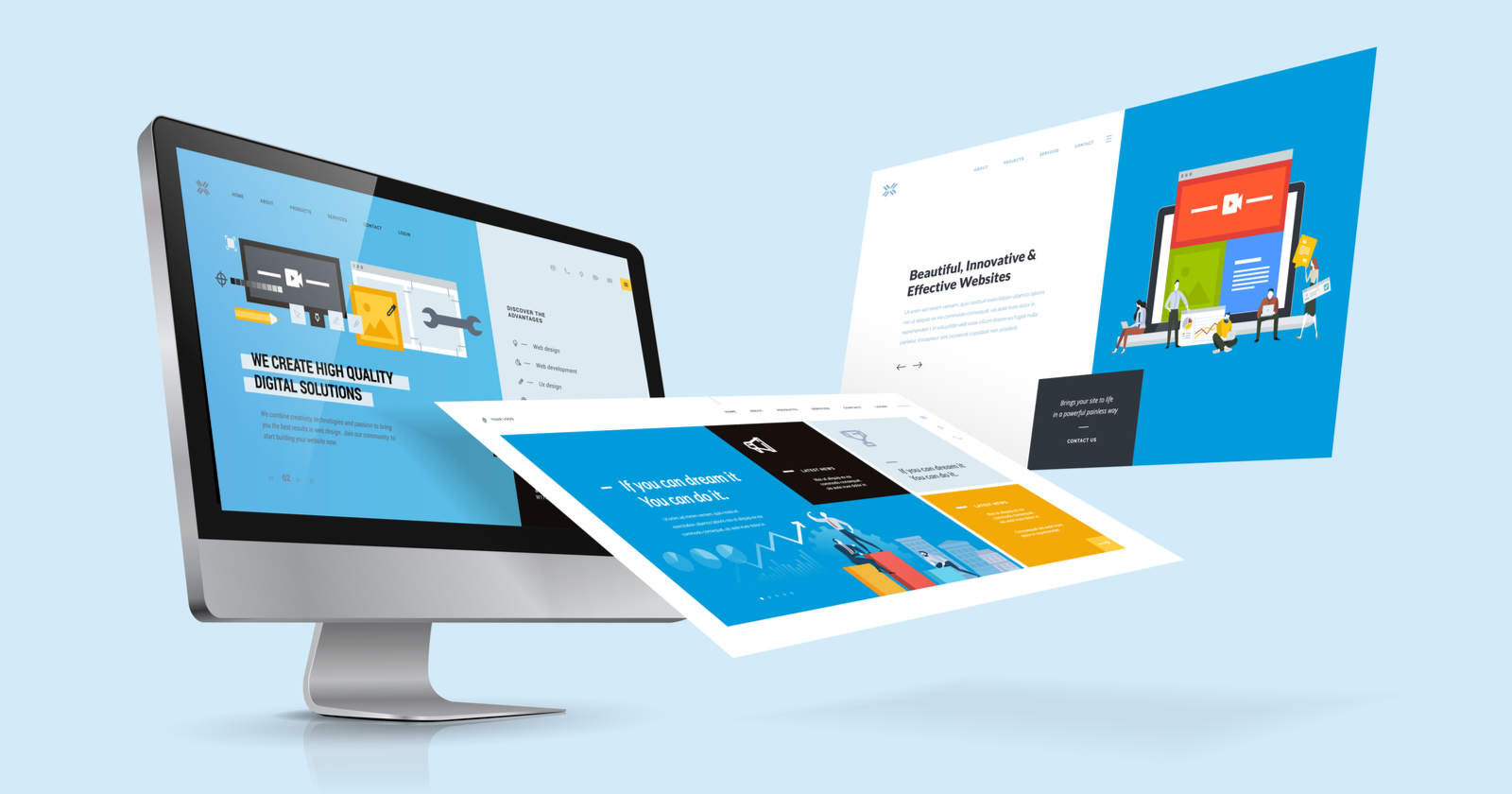Improve your brand’s reach online with holistic web design approaches.
Improve your brand’s reach online with holistic web design approaches.
Blog Article
Produce a Well Balanced Online Experience With All Natural Website Design
In today's digital landscape, producing a balanced online experience with alternative internet layout is essential for fulfilling the diverse requirements of users. By focusing on accessibility and lining up content approach with user choices, organizations can significantly improve interaction.
Comprehending Holistic Internet Layout
What does it imply to take on a holistic approach to website design? An all natural approach stresses the assimilation of numerous components to create a natural online experience. This methodology thinks about not only aesthetic aspects but likewise capability, functionality, and the psychological effect of the site on its users. By viewing a website as an interconnected ecosystem, developers can make certain that every part-- visual style, content, navigating, and interactivity-- works harmoniously to meet individual demands.

Incorporating an alternative point of view includes recognizing the target audience and their certain needs, choices, and actions. It calls for an evaluation of how customers engage with different aspects of the website and just how these communications influence their total experience. This method likewise considers the broader context in which the site operates, including brand identity, marketing approaches, and affordable landscape.
Eventually, a holistic method to web design leads to a more engaging and reliable online existence. By prioritizing the user trip and fostering a seamless experience across all touchpoints, developers can create sites that not only record interest however additionally encourage continual interaction and fulfillment. This thorough strategy advertises lasting success and promotes brand commitment.
Trick Principles of Individual Experience

One crucial concept is usability, which highlights the significance of straightforward navigation and clear functionality. Sites need to be very easy to browse, permitting individuals to find info promptly. This is closely tied to consistency, where style elements, such as switches and food selections, should remain consistent throughout the site to improve knowledge and simplicity of usage.
One more considerable concept is responses, making sure that individuals are educated concerning their interactions. Whether with aesthetic signs or alerts, comments reinforces a feeling of control and fulfillment. Additionally, the principle of pecking order determines that information ought to be arranged practically, directing users via material efficiently.
Finally, psychological layout plays a vital role in UX. By evoking favorable feelings via aesthetic appeals and interactions, designers can develop remarkable experiences that foster individual commitment - website development consulting. By sticking to these principles, internet developers can create holistic experiences that resonate with individuals and fulfill their objectives
Significance of Accessibility
Accessibility is a critical aspect of website design that guarantees all individuals, no matter their capabilities or impairments, can engage with digital content efficiently. By prioritizing availability, internet developers develop inclusive environments that provide to varied individual requirements, enhancing overall individual experience.
An obtainable web site follows established guidelines, such as the Internet Content Accessibility Standards (WCAG), which advise techniques like supplying message choices for non-text material, making sure enough color comparison, and making it possible for keyboard navigation. These practices not just web developers for small businesses offer individuals with disabilities, such as aesthetic or auditory impairments, however also benefit other individual teams, consisting of those with situational restrictions or older grownups.
In addition, the significance of accessibility expands beyond honest factors to consider; it likewise impacts service end results. An inclusive web site can reach a broader target market, ultimately leading to raised involvement and conversions. Additionally, accessibility conformity lowers the risk of legal repercussions associated with discrimination.

Incorporating Material Technique
Producing a comprehensive digital setting normally results in the requirement of a robust web content technique that straightens with user needs. A reliable web content technique acts as the backbone of holistic website design, making sure that info is not just obtainable but additionally engaging and pertinent. It requires a deep understanding of the target market, including their choices, special info behaviors, and possible obstacles to gain access to.
To incorporate a material approach successfully, companies should prioritize user-centric material creation. This can be accomplished with detailed audience research study, which notifies the sorts of material that will resonate with individuals. Additionally, material needs to be structured logically, using clear headings, bullet factors, and succinct language to improve readability.
Collaboration throughout groups-- design, growth, and material-- is necessary to guarantee that the web content approach is cohesively carried out. Routine directory audits of material performance will certainly assist in refining techniques, making sure the material continues to be fresh and aligned with customer expectations. Ultimately, incorporating multimedia elements can improve user communication, dealing with diverse knowing styles while advertising inclusivity. By focusing on a cohesive web content approach, organizations can develop a well balanced online experience that fosters involvement and access for all customers.
Determining Success and Involvement
While a well-executed material method forms the foundation of all natural website design, gauging success and engagement is critical for evaluating its efficiency and leading future improvements. Secret efficiency indications (KPIs) such as page views, bounce prices, and ordinary session period provide quantitative understandings right into customer behavior. These metrics highlight which content resonates most with individuals and where possible rubbing factors might exist.
Furthermore, qualitative actions, such as individual comments and surveys, can offer much deeper understandings into user satisfaction and involvement degrees. Tracking social networks interactions and conversion prices likewise helps gauge the performance of material in driving desired activities, whether that be purchases, sign-ups, or information demands.
Using tools like Google Analytics, heatmaps, and A/B screening can enhance understanding of customer interaction patterns and preferences. This information enables internet designers and material strategists to repeat on their styles, ensuring that the on-line experience stays user-centered and straightened with service objectives.
Verdict
Finally, a well balanced online experience with all natural web layout necessitates the assimilation of aesthetic appeals, functionality, and functionality. By focusing on user requirements and accessibility, designers can produce interconnected ecosystems that improve involvement and complete satisfaction. A well-aligned web content strategy additionally adds to a cohesive individual experience, while regular feedback systems are crucial for fostering loyalty. Eventually, this thorough approach not only raises customer satisfaction but likewise enhances brand name identification in an increasingly competitive digital landscape.
Report this page